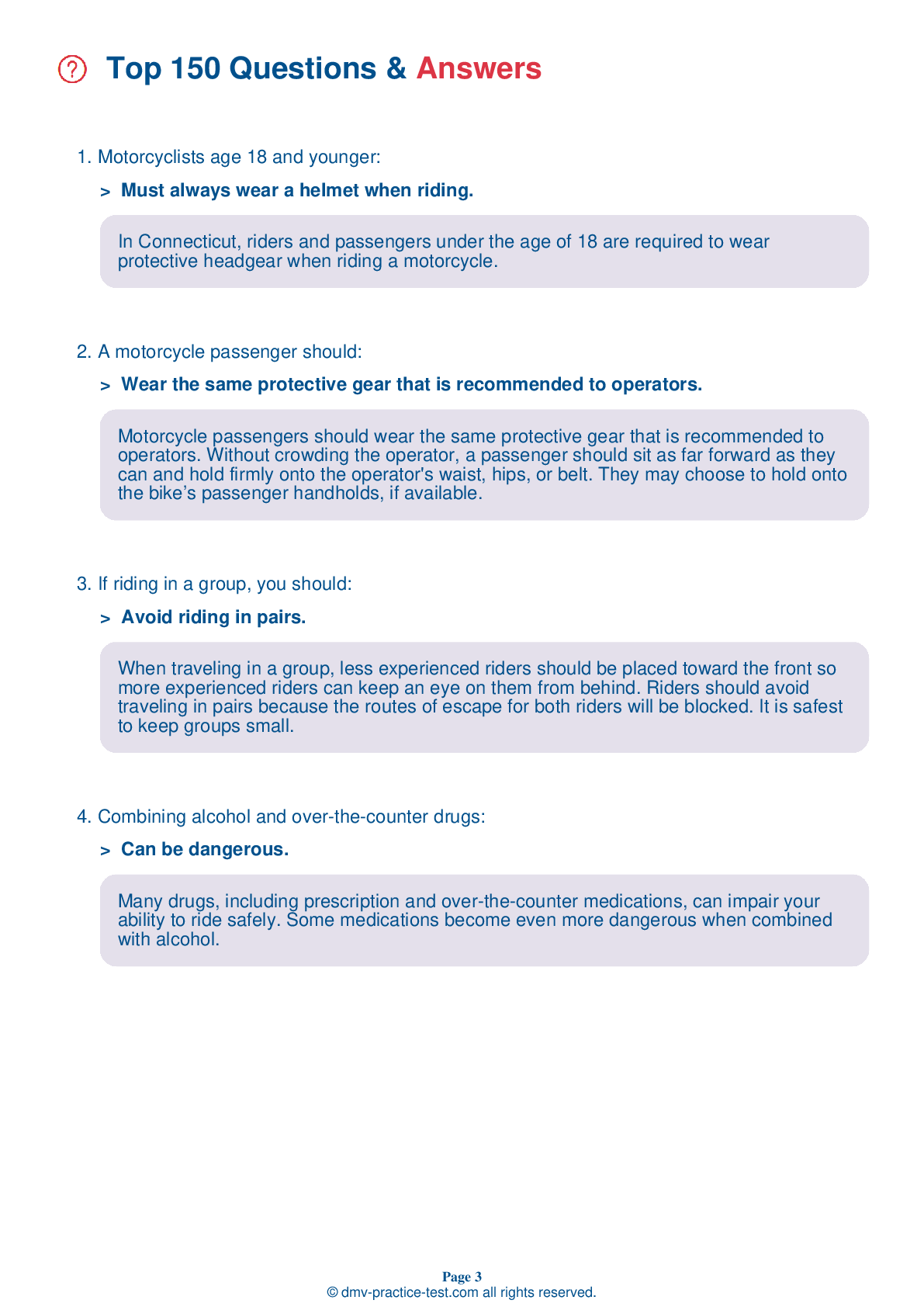Motorcycle Test | License CT 2026 | FREE Online Practice! #14 Page 3 of 3
Take this FREE motorcycle test (license in CT 2026) to check your knowledge of the road rules. To improve your results, download a motorcycle handbook online, study theory, and practice for free on our website. Still worried about how to get a motorcycle license in Connecticut in 2026? Check our website for more sample tests, train as much as possible, and boost your grades!
11 . When traveling on wet pavement, a motorcycle rider:
Under wet conditions, it is recommended that you avoid the oily center strip of the lane and ride in the wheel tracks left by vehicles ahead.
12 . A danger of riding next to a row of parked cars is:
Riding next to parked cars presents a number of potential dangers. A driver might pull out of parking space and into your path without looking. Car doors may be opened into your lane and pedestrians may step out from between cars.
13 . Maximum straight-line braking is done by:
Maximum straight-line braking is accomplished by simultaneously applying both the front and rear brakes without locking either wheel.
14 . Before starting a turn, a motorcycle rider should change gears to:
It is best to change gears before starting a turn. Shifting gears while in the turn can cause a sudden change in power to the rear wheel, causing a skid. If you must change gears while in a turn, change gears smoothly to best prevent skidding.
15 . When is it important for a rider to use their mirrors?
It is particularly important for a rider to check their mirrors when slowing down or stopping, when stopped at an intersection, when changing lanes, and when turning.
16 . To be effective, an eye or face shield must:
To be effective, an eye or face shield must be free of scratches; be resistant to penetration; allow clear views to both sides; fasten securely; permit air to pass through to prevent fogging; and allow room for eyeglasses or sunglasses, if needed.
See the exact questions that will be on the 2026 Connecticut DMV exam.
99.2% of people who use the cheat sheet pass the FIRST TIME
Jeneen was tired of paying $5/gallon. She got herself a scooter that required the motorcycle license. She studyed the motorcycle test cheat sheet and passed her test the next day!
Christopher tells us how he knew nothing prior to obtaining the motorcycle study guide, and he only got one question wrong because he clicked on the wrong answer by mistake.



